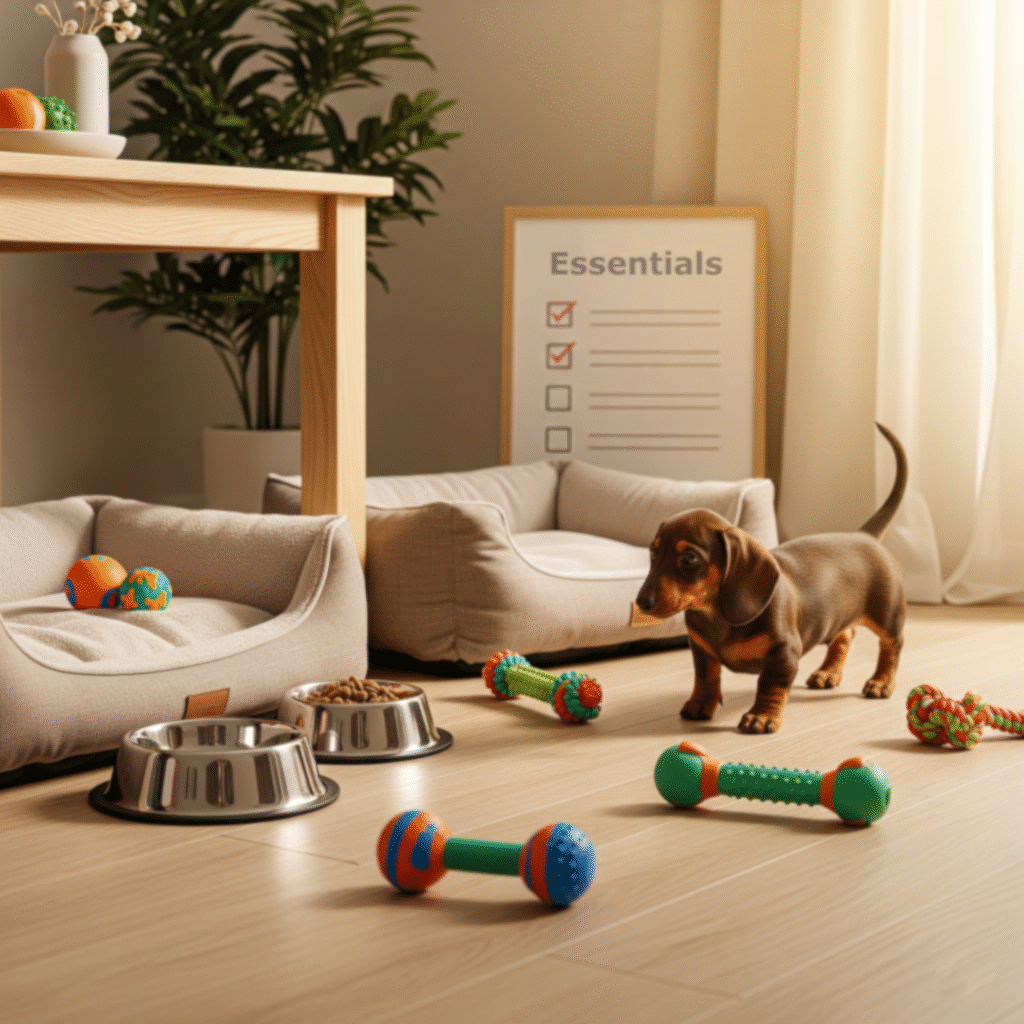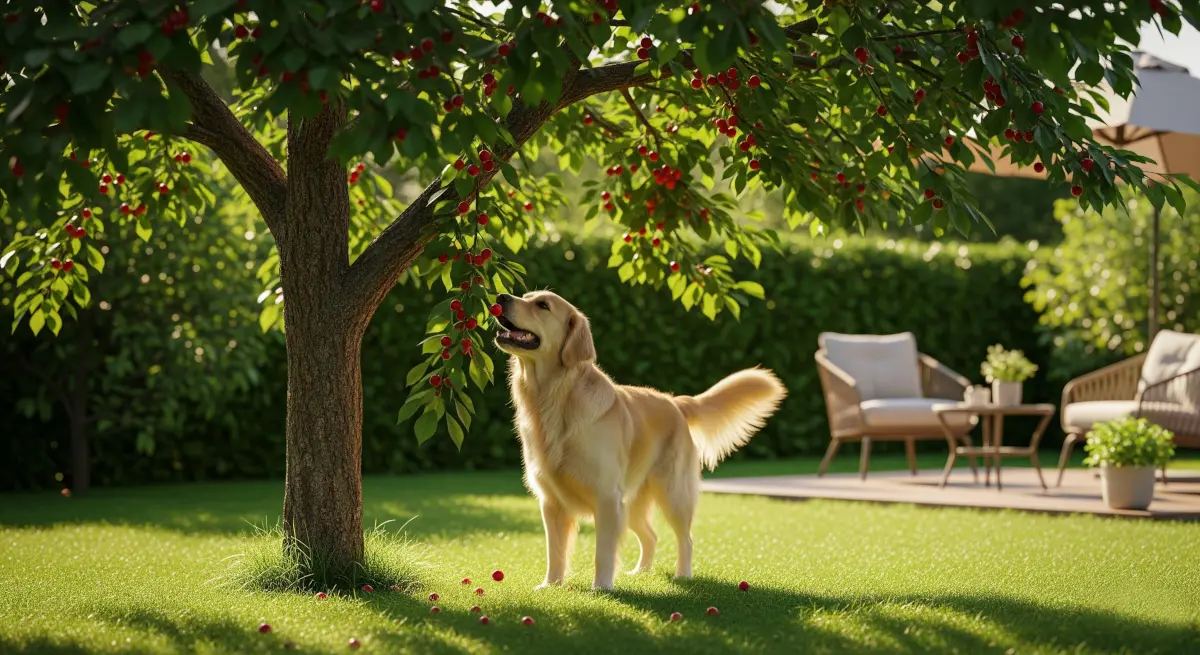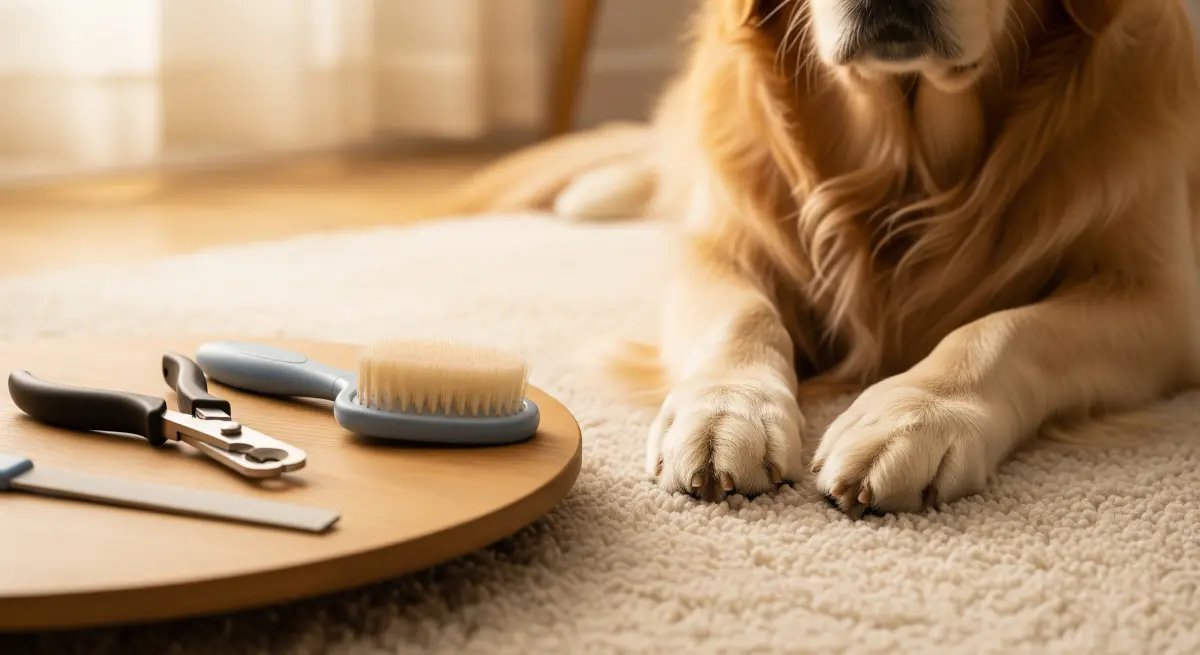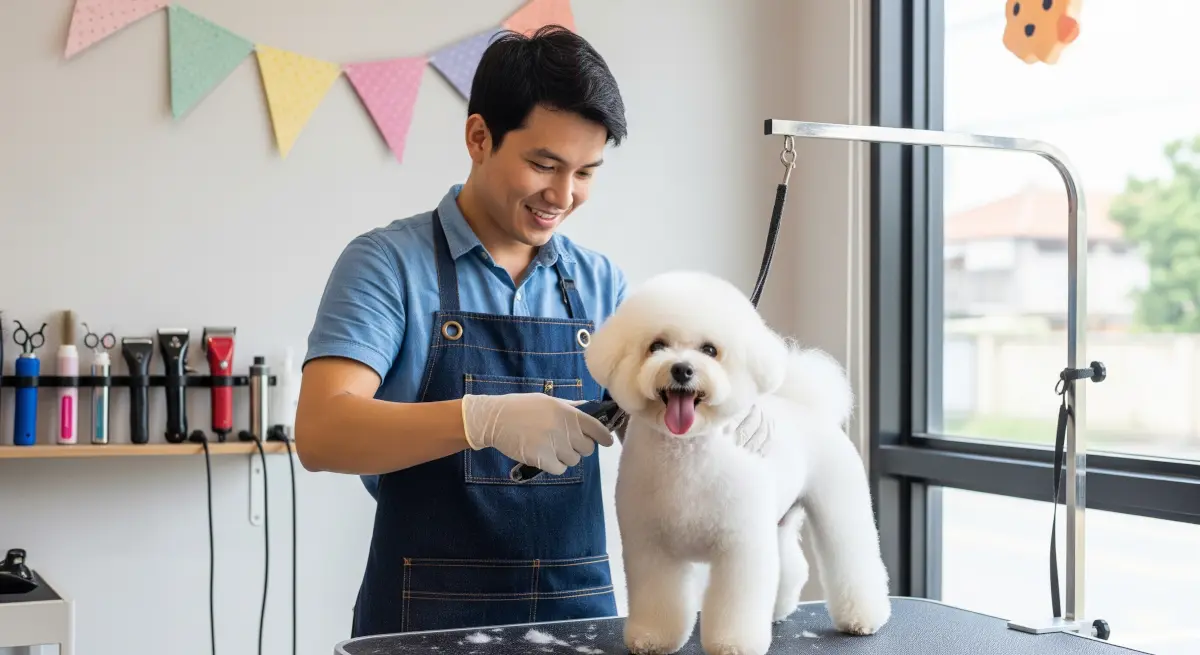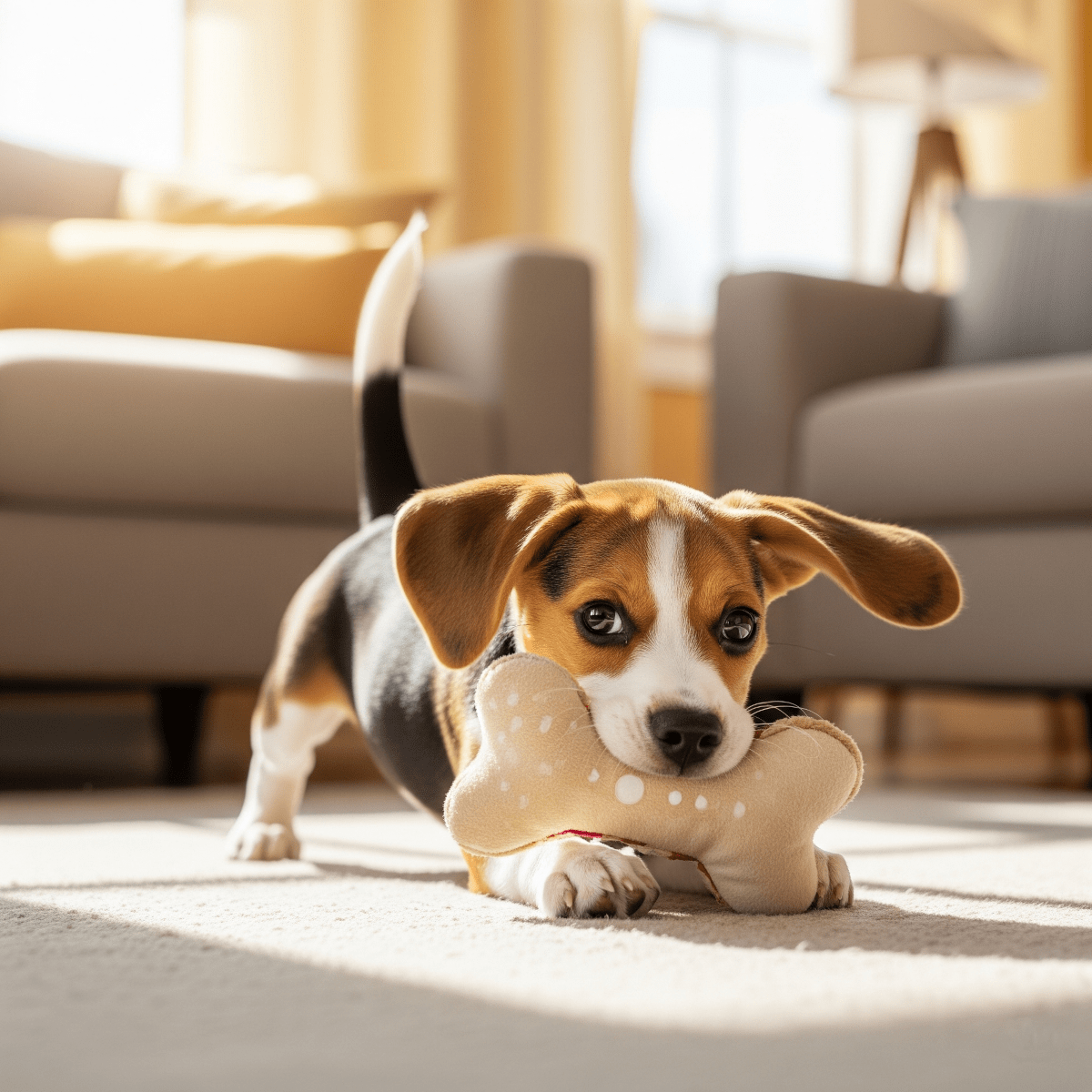Getting your first dog is exciting, but did you know that 60% of new pet parents feel overwhelmed by choosing the right supplies? Creating a comprehensive dog essentials list before your furry friend arrives makes all the difference between a smooth transition and a stressful scramble. This guide reveals exactly what your dog needs across five essential categories: feeding, hygiene, comfort, safety, and entertainment. You’ll discover budget-friendly tips to prioritize purchases, avoid common first-time mistakes, and access a downloadable checklist that ensures nothing important gets forgotten. Let’s transform your pet preparation from overwhelming to organized!
Why Planning Your Dog Essentials Matters
Dog essentials are the foundation items that ensure your pet’s immediate comfort, health, and safety. Proper planning prevents last-minute trips to the store when your new dog is already home and anxious.
Having everything ready creates a welcoming environment that helps your dog adjust faster. It also reduces your stress as a new owner, allowing you to focus on bonding and training instead of shopping.
Smart planning saves money. When you know exactly what you need, you avoid impulse purchases and can take advantage of bulk deals or starter kits.
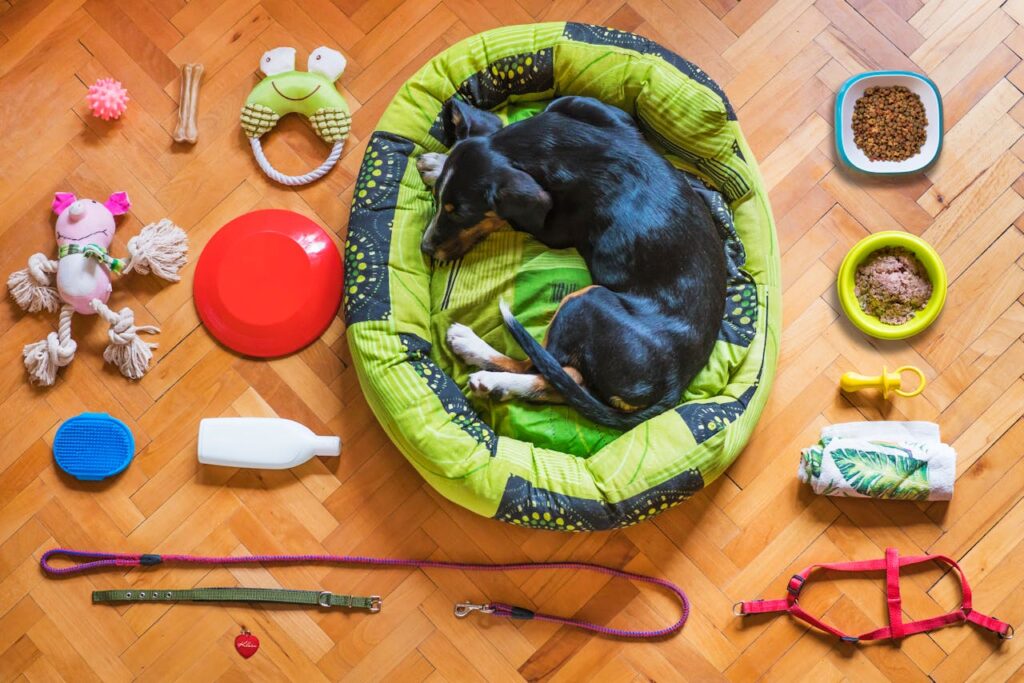
Essential Feeding Supplies Every Dog Owner Needs
Your dog’s feeding essentials form the cornerstone of daily care. Quality nutrition starts with the right supplies and proper food choices.
High-Quality Dog Food
Choose food formulated for your dog’s life stage – puppy, adult, or senior. Puppies need nutrient-dense formulas for growth, while adult dogs require balanced maintenance diets.
Consult your veterinarian for recommendations based on your dog’s breed, size, and any health considerations. This prevents digestive issues during the crucial adjustment period.
Durable Food and Water Bowls
Stainless steel or ceramic bowls work best because they’re hygienic and resist bacteria. Non-slip bases prevent messy spills during excited mealtimes.
Size matters – choose bowls appropriate for your dog’s breed. Large dogs need bigger bowls, while small breeds do better with shallow dishes.
Training Treats
High-value treats are essential for positive reinforcement training. Keep them small and healthy to avoid overfeeding during training sessions.
Hygiene Essentials for a Healthy, Happy Dog
Maintaining your dog’s hygiene prevents health issues and keeps your home clean. These supplies handle routine care and unexpected messes.
Grooming Tools
A quality brush suited to your dog’s coat type removes loose hair and prevents matting. Short-haired dogs need different brushes than long-haired breeds.
Dog-specific shampoo protects their skin’s natural pH balance. Human shampoos can cause irritation and dryness.
Nail Care and Dental Health
Nail clippers prevent overgrowth that can cause pain and mobility issues. Start handling your dog’s paws early to make nail trims easier.
Dog toothbrushes and toothpaste maintain oral health. Daily brushing prevents expensive dental problems later.
Cleanup Supplies
Enzyme cleaners effectively remove odors and stains from accidents. They break down organic matter that regular cleaners miss.
Poop bags are essential for walks and outdoor cleanup. Choose biodegradable options when possible.
Comfort Items That Help Dogs Feel at Home
Comfort essentials create a safe space where your dog can relax and feel secure in their new environment.
The Perfect Dog Bed
Choose a washable bed appropriate for your dog’s size and sleeping habits. Some dogs prefer soft cushions, while others like firmer surfaces.
Place the bed in a quiet area where your dog can retreat when tired or overwhelmed.
Crate Training Benefits
A properly-sized crate provides a den-like space that many dogs find comforting. It’s also invaluable for house training and safe travel.
The crate should be large enough for your dog to stand, turn around, and lie down comfortably.
Cozy Blankets
Soft blankets add warmth and comfort, especially for puppies or senior dogs. They’re also useful for protecting furniture.
Safety Essentials That Keep Your Dog Secure
Safety supplies protect your dog both indoors and outdoors while giving you peace of mind as a responsible owner.
Proper Identification
An adjustable collar with ID tags ensures your dog can be returned if lost. Include your name, phone number, and address on the tags.
Consider microchipping as a permanent form of identification that can’t fall off or become unreadable.
Walking Equipment
A sturdy leash appropriate for your dog’s size ensures safe walks and outdoor adventures. Six-foot leashes work well for most situations.
Harnesses distribute pressure more evenly than collars and give you better control during walks.
Home Safety Measures
Baby gates help restrict access to dangerous areas like stairs or rooms with hazards. They’re especially useful during the training period.
Flea and tick prevention protects both your dog and family from disease-carrying parasites common in many regions.
Entertainment and Enrichment for Happy Dogs
Mental stimulation prevents boredom and destructive behaviors while strengthening your bond with your new pet.
Chew Toys for Healthy Habits
Appropriate chew toys satisfy natural instincts and protect your furniture. Choose size-appropriate options that won’t break into dangerous pieces.
Rotate toys regularly to maintain interest and prevent boredom.
Interactive Mental Stimulation
Puzzle toys and treat-dispensing toys challenge your dog’s mind and provide independent entertainment.
Kong toys filled with treats or peanut butter can keep dogs occupied for extended periods.
Smart Budgeting Tips for New Dog Parents
Creating a thoughtful budget helps you prioritize essential purchases without overspending on unnecessary items.
Immediate Must-Haves
Focus first on feeding supplies, basic comfort items, safety gear, and essential hygiene tools. These items are needed from day one.
A collar, leash, food, bowls, bed, and basic grooming supplies should be your initial priorities.
Gradual Acquisitions
Additional toys, specialty grooming tools, and extra comfort items can be purchased over time as you learn your dog’s preferences.
This approach spreads costs over several months and helps you make informed choices based on your dog’s actual needs.
Money-Saving Strategies
Look for starter kits that bundle essential items at discounted prices. Many pet stores offer new owner packages that include basics.
Buy durable, multi-purpose items that will last longer and serve multiple functions.
Your Complete Dog Essentials Checklist
Use this checklist to ensure you have everything your new dog needs:
Feeding Essentials
- Age-appropriate dog food
- Non-slip food and water bowls
- Training treats
Hygiene Must-Haves
- Coat-specific brush
- Dog shampoo
- Nail clippers
- Dog toothbrush and toothpaste
- Poop bags
- Enzyme cleaner
Comfort Items
- Washable dog bed
- Appropriately-sized crate
- Soft blankets
Safety Equipment
- Collar with ID tags
- Adjustable harness
- Sturdy leash
- Flea and tick prevention
- Baby gates or playpen
Entertainment and Enrichment
- Size-appropriate chew toys
- Interactive puzzle toys
- Kong or treat-dispensing toys
Frequently Asked Questions About Dog Essentials
What are the most important things you need for a dog?
The most critical dog essentials include quality food, food and water bowls, a collar with ID tags, a leash, a bed, basic grooming supplies, and waste cleanup materials. These items address your dog’s immediate needs for nutrition, safety, comfort, and hygiene from the moment they arrive home.
How much should I budget for initial dog supplies?
Initial dog supplies typically cost between $200-500 depending on your dog’s size and the quality of items you choose. Focus on essentials first, then gradually add comfort and entertainment items. Starter kits from pet stores often provide good value for basic needs.
Do I need a crate for my new dog?
While not absolutely essential, a crate is highly recommended for house training, providing a safe space, and travel. Many dogs find crates comforting as a den-like retreat. Choose a size that allows your dog to stand, turn around, and lie down comfortably.
What dog supplies can I buy gradually instead of immediately?
Non-essential items you can purchase over time include extra toys, specialty grooming tools, additional bedding, training equipment beyond basics, and luxury comfort items. Focus on the five essential categories first, then expand based on your dog’s specific needs and preferences.
How do I choose the right size supplies for my dog?
Consider your dog’s current size and adult size if they’re still growing. Adjustable items like collars and harnesses accommodate growth. For bowls and beds, choose based on current needs and upgrade as your dog grows. Your veterinarian or pet store staff can help with sizing questions.
Setting Your Dog Up for Success
Having the right dog essentials creates a foundation for a happy, healthy relationship with your new pet. By preparing thoughtfully and prioritizing your purchases, you’re already taking the first steps toward responsible pet ownership.
Remember that every dog is unique. Start with the basics from our checklist, then adjust based on your dog’s personality, preferences, and needs as you get to know them better.
The initial investment in quality supplies pays dividends in your dog’s health, happiness, and your peace of mind. With proper preparation, you’ll be ready to focus on what matters most – building a loving bond with your new furry family member.
Ready to welcome your new dog home? Download our printable checklist and start gathering your essentials today. Your future self – and your dog – will thank you for the thoughtful preparation!

